Dentsu Inc. Hosts Workshop "The New Evolution of OOH Media" ~ Cannes Jury Member Yoshimitsu Sawamoto Speaks on "OOH That Moves the Heart"
On March 3, Dentsu Inc. held the OOH Workshop '14 "Emerging! The New Evolution of OOH Media" at Dentsu Hall in Shiodome, Tokyo. The event explained the latest OOH trends from creative, information dissemination, and urban production perspectives, while also introducing Dentsu Inc.'s unique OOH planning and effectiveness verification case studies. Approximately 600 advertisers and others participated.

In his opening remarks, Tsuyoshi Yanagidate, Director of Dentsu Inc. Out-of-Home Media Bureau, stated, "Over the next six years leading up to the Tokyo Olympics and Paralympics, our cities will undergo a transformation. Advertising must evolve alongside this change. OOH is poised to become an exciting medium." He also expressed enthusiasm for establishing common metrics for transportation and outdoor media—current challenges—and developing Dentsu Inc.'s proprietary planning programs.
Next, under "New Evolution Theory ①," Executive Creative Director Yoshimitsu Sawamoto of Dentsu Inc. Communication Design Center delivered a lecture themed "OOH That Moves Hearts." Having served as a juror for the Outdoor category at the 2013 Cannes Lions, he prefaced his remarks by stating he judged entries based on whether they were works only possible in outdoor settings and whether they served a useful purpose for people. He then explained the Grand Prix and Gold Lion-winning works, showing the submitted videos. Regarding the Grand Prix winner, IBM's "BENCH/SHELTER/RAMP" (Grand Prix, France), which was a three-dimensional poster that also served as a bench, ramp, and shelter, he stated: he stated, "It's a poster that becomes part of the cityscape and is even designed as such. It wasn't a huge undertaking, but it was simple. It was recognized for revitalizing the city by adding a small idea."
Regarding the awards, he highlighted examples like an event-based approach (Brazil) that created an online "incident" to drive viral spread; a technical university project (Peru) that integrated technology to collect dew matching the ad content on a giant billboard in a desert town, actually producing water for daily use; and a newspaper campaign (Argentina) using an actual car involved in a highway accident. He emphasized that storytelling is crucial for spreading buzz. He expressed optimism, stating, "I believe opportunities will come for OOH as we approach 2020. In Tokyo, proposals have a high likelihood of becoming reality. It seems likely that things will actually happen not just as corporate advertising, but as improvements that benefit and serve the city."
"New Evolution Theory ②" featured a presentation by Akira Matsui of Dentsu Inc. MC Planning Bureau titled "OOH as the 'Ignition Point for Buzz'." He discussed characteristic diffusion cases of OOH within Japan, its features in the smartphone era, and its future positioning. He first explained OOH diffusion trends based on analysis results of word-of-mouth volume (Twitter and blog post counts) related to OOH campaigns, obtained with cooperation from Dentsu Inc. iPR Bureau.
While acknowledging the need for continued accumulation of actual performance data, he stated, "It is certain that OOH is being used as content," and presented the following principles for OOH diffusion: ① Provide perfect content for smartphone users killing time! ② Is the encounter experience well-crafted? ③ Does it offer visually appealing "scenes" that make people want to take photos? Furthermore, emphasizing the strong compatibility between OOH and smartphones, it stressed that in this era of widespread smartphone adoption, OOH—as a medium enabling "online right there" within the O2O or OAO (Online At Offline) concept—holds value as a "trigger" medium connecting online and offline in the purchase journey. It concluded by stating that the "O" in O2O and OAO stands for OOH.
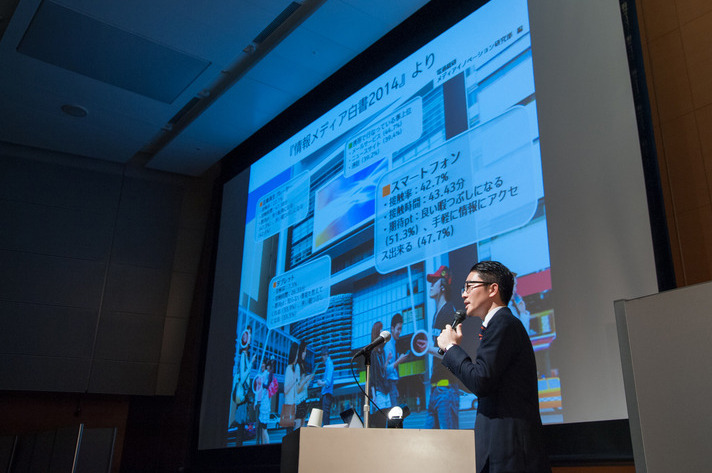
The theme of "New Evolution Theory ③" was "Producing the City through OOH Media Utilization." Presented by Dentsu Inc. OOH Division Director Daisho Tomita and Marketing Design Center Director Moriyasu Natsume. Director Tomita introduced overseas examples where OOH media energized cities: London's deeply rooted Cycle Hire public transport system; New York's Times Square, where regulations mandate vibrant OOH displays creating a lively urban landscape attracting over 50 million tourists annually; and domestic examples like Roppongi Hills and Tokyo Midtown. He explained how OOH media can be utilized to enrich people's lives.
Director Natsume explained that in recent years, "town management" – the concept of operating, utilizing, and nurturing a town – has become mainstream in urban development. He emphasized that creating compelling attractions is a key factor in enhancing a town's value. He proposed that when approaching town attraction creation through perspectives like "communication," "expression," "systems," and "space," various opportunities emerge where companies can generate both social and economic value. From his perspective as someone involved in town concept creation and branding, he projected that "OOH, situated at the intersection of considering the relationship between people and the town, and the relationship between companies and the town, holds significant potential to contribute to town development."

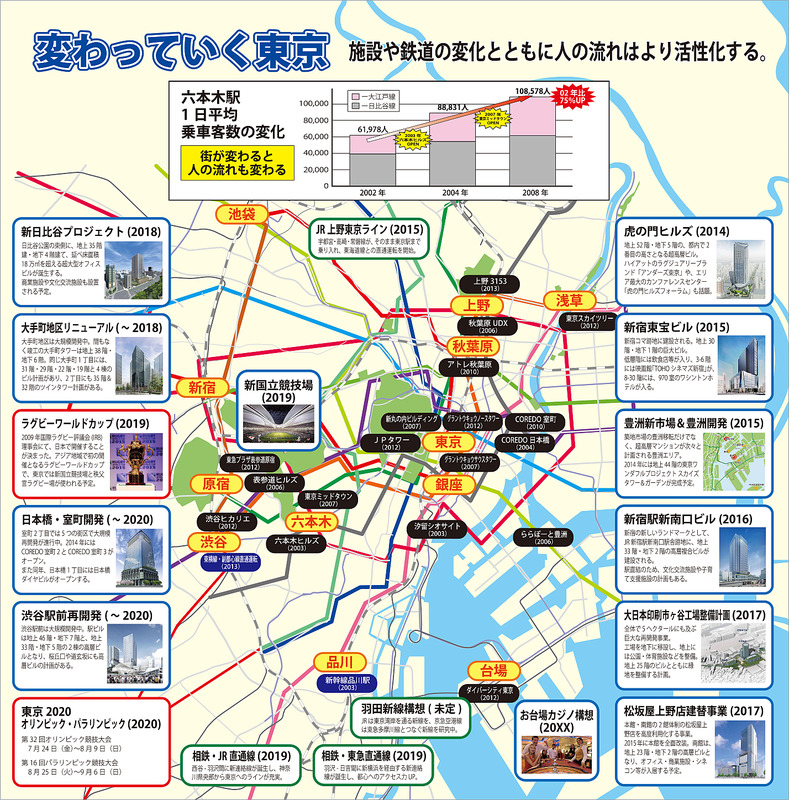
Finally, Masayuki Nakano, Director of Dentsu Inc.'s OOH Division, presented "The Current State of OOH Planning" as part of "New Evolution Theory ④". He first outlined OOH's distinctive functions: ① Triggering viral buzz, ② Metropolitan reach, ③ Synergy with TV, ④ Affinity with digital, and ⑤ Recency. He then explained verification data from Video Research Ltd.'s "SOTO" survey and research aimed at establishing common metrics for transit advertising.
He then explained concrete transit advertising planning based on generalized case studies. He introduced efforts to establish common outdoor advertising metrics, new concepts elucidating outdoor advertising's power, and Dentsu Inc.'s original method: Insertion Customer Index Planning. Furthermore, he presented effect verification examples using Dentsu Inc.'s proprietary campaign survey analysis. He also analyzed insights useful for the next campaign planning, examining perspectives such as continuous surveys of the same brand, comparisons with competing brands, and analysis of the effectiveness of individual media. He stated that practicing PDCA enables "the most accurate proposals and verification possible at that point in time."
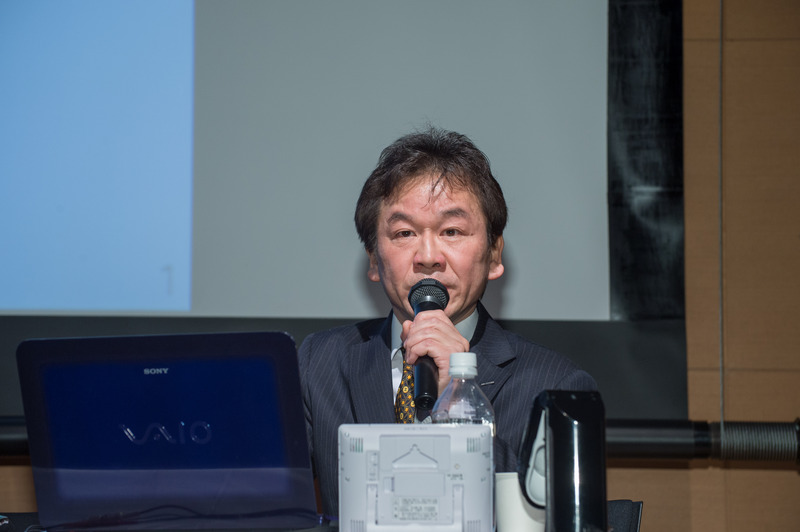
◆Beyond the presentations, the venue featured panel displays showcasing the latest OOH technologies and case studies.
Next-generation voice synthesis product "CeVIO"
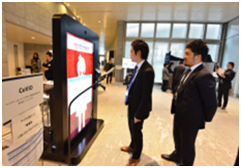
A voice synthesis software that enables conversation with characters and expresses emotions like joy, anger, sadness, and happiness. It introduced the exhibition content within the venue while conversing with visitors.
Smile-saving mirror "Emita-me"
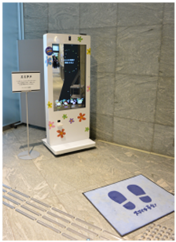
This mirror quantifies smiles reflected in it. By accumulating these points (Emmy), users can make donations. Winner of the Good Design Award.
Aqua Top Display
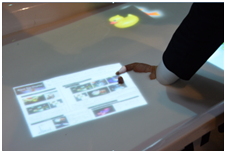
A system that projects images onto water surfaces as displays. It enables touch panel functionality like a tablet device on the water surface.
Was this article helpful?